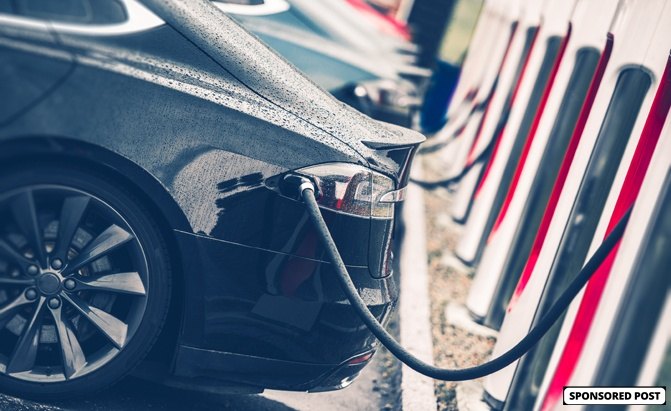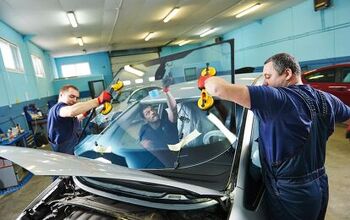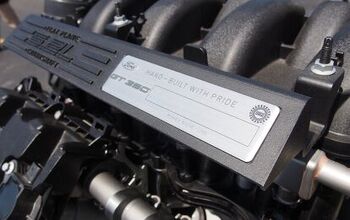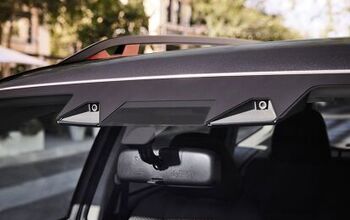Regenerative Braking: Everything You Ever Wanted to Know
The secret is out: electric propulsion is a win.
Whether we’re talking about a gas-electric hybrid, or a full-on battery-electric vehicle with no internal combustion engine, electric motors make driving more efficient, more environmentally friendly, and cheaper on a per-mile basis. Plus, with maximum torque available from very low speeds, take-off is as fun as it is intoxicating. For these and myriad other reasons, electric propulsion isn’t going anywhere – which means it’s time to talk about regenerative braking.
As the leading manufacturer of brake pads for electric and hybrid vehicles, NRS Brakes certainly knows a thing or two about the subject, thanks to premium galvanized brake pads specifically engineered for EVs. We’ve partnered with the company to bring you this brief overview of regenerative braking, covering the basics of how these systems work and what they mean for your braking system components.
How Does Regenerative Braking Work?
Before we dive into regenerative braking, we should talk about what actually happens when you hit the brakes in a regular gas or diesel vehicle.
Depressing the brake pedal in a regular internal combustion car applies pressure to a hydraulic fluid that forces your brake calipers to press the brake pads into the rotors, slowing the wheels’ rotational speed – and thus, your vehicle – using friction. The components are a bit different in the case of drum brakes, but the basic principle is the same. With either system, what’s really happening is your vehicle’s kinetic energy is being absorbed and dissipated into the environment. In this case, as friction causes the brakes to heat up, that heat then radiates into the atmosphere.
But electric motors have a special talent that internal combustion engines don’t have: when you force an electric motor to turn, it acts as a generator, creating an electric current within its wire windings. In fact, every electric motor is, in effect, also a generator, and every generator is a motor. That process of “inducing” a current consumes energy, of course, and the current flowing through the windings creates a magnetic field that gradually slows the motor to a stop. All an EV-maker needs to do to implement regenerative braking is design a mechanism for the current generated by the decelerating motor to flow back into the battery as recovered electrical energy.
It’s almost as if, instead of dissipating your car’s kinetic energy as waste heat each time you brake, your brake pads could instead convert that energy into gasoline that gets poured right back into your tank. Preposterous? Maybe. But it’s an apt analogy for how regenerative braking works on a hybrid or electric vehicle.
What About Conventional Brakes?
Of course, regenerative braking has its limitations. Even the best, most effective regenerative braking systems generate less than half the amount of braking force as conventional friction brakes, making emergency stops all but impossible with regenerative braking alone, and they aren’t capable of holding a vehicle stationary on an incline. For that reason, all hybrids and EVs still have a regular old friction braking system equipped.
For those friction brakes, having help from a regenerative braking system is both good and bad. On the one hand, regenerative braking takes some of the load off of the pads and rotors, meaning they lose material more slowly and wear less than on a conventional internal combustion-powered car. Less load also means less heat; on average, the friction brakes on an EV or hybrid undergo less extreme heat cycles and don’t see quite the same peak temperatures as on internal combustion vehicles.
On the other hand, nothing on your car likes sitting under-utilized for long stretches of time, and that definitely includes your brakes. If you engage your EV’s one-pedal driving mode often, you might go entire trips without so much as touching your brake pedal, and with less heat being generated, your brakes have fewer chances of boiling off excess moisture. More moisture means more corrosion, and corrosion is the main culprit behind a host of different brake pad failure modes.
The most common failure mode is delamination, where the edge of the brake pad friction material lifts off and separates from the backing plate. That often occurs as a result of “rust jacking” – a process that occurs as the steel pad backing plate, in most cases protected only by a thin coat of paint, begins to rust, and that rust drives a wedge between the plate and the friction material. It doesn’t help that on a majority of (especially cheaper) brake pads, the friction material is secured only by an adhesive.
At best, delamination causes your brakes to emit some unpleasant noises. At worst, it causes your car to become unstable under braking and compromises braking performance. Chunks of friction material can even crack off, altering how the pad sits against the rotor and leading to rotor gauging and other damage.
What’s the Solution?
The solution to these problems, especially when it comes to hybrids and EVs with newer regenerative braking systems, is galvanized brake pads. Galvanization is the process of giving ferrous metals like steel a protective zinc coating – something to serve as a “sacrificial barrier” against corrosion so that rust never has a chance to take hold. On brake pad backing plates, galvanization is much more effective at mitigating moisture intrusion than a simple paint coating, warding off corrosion and extending the service life of the pad by preventing rust jacking and delamination.
The benefits of galvanized brake pads on cars with regenerative braking are clear, and that’s why NRS Brakes offers galvanized replacement pads for a range of EVs, from the Audi e-tron to the Nissan Leaf to Ford’s performance-oriented Mustang Mach-E, and many more. With galvanized backing plates, the pads are better equipped to cope with the reduced moisture dissipation that often comes with regenerative braking, lasting for years on your EV even as they seldom see heavy use.
Helping NRS brake pads to prevent delamination and early failure is the company’s patented mechanical attachment technology, which sees the friction material secured to the backing plate via rows of sharp, tooth-like pins instead of an adhesive that’s prone to drying and cracking. The innovative tech is a revolutionary thermal conductor that substantially improves heat transfer effectiveness, making it ideal for the rapidly-expanding EV market, with applications beyond the auto industry as well.
The Bottom Line
At the end of the day, regenerative braking is a miraculous thing. It manages to reclaim energy that would otherwise be lost as waste heat and turns it back into a bit of extra battery range – and in doing so, means less wear and thermal stress on your regular friction brakes. But that reduced reliance on your regular brake pads can lead to atrophy, so even while they wear more slowly, moisture can build and rust can accumulate, driving brake pad friction material away from the backing plate, prompting early failure and a potentially expensive repair.
With NRS Brakes’ line of galvanized brake pads engineered explicitly for EVs and hybrids, those concerns are laid to rest. So go ahead: regenerate away.
For more on NRS Brakes’ EV brake pad line, click here.
Main photo credit: Virrage Images / Shutterstock.com
More by AutoGuide.com Staff




































Comments
Join the conversation